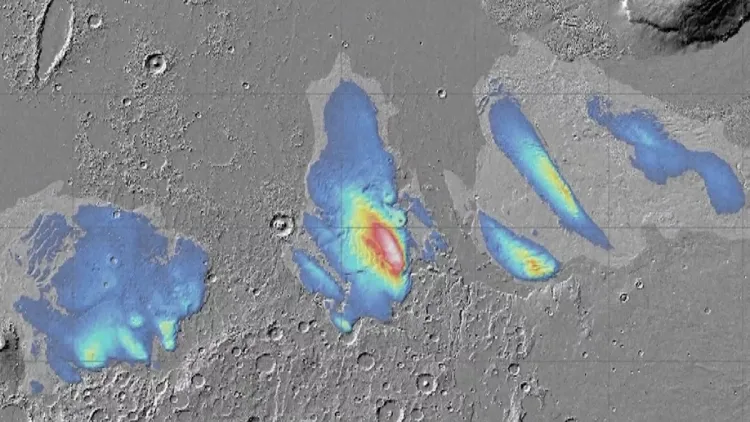Discovering Water Ice on Mars: A Step Toward Future Exploration
As humans prepare for the long-anticipated journey to Mars, one of the most crucial resources they'll need is water. Moving large quantities of water across the vast distance of space is impractical, so finding ways to access water on Mars itself is essential. A groundbreaking study led by researchers at the Planetary Science Institute (PSI) reveals a large, previously unknown reservoir of water ice on the Red Planet, potentially offering a solution for future explorers.

Discovery of Water Ice in the Nero Montes Region
The newly discovered reservoir is located in the Nero Montes region of Mars, an area that had not been previously recognized as a significant water ice deposit. The study, published in the journal Icarus, focuses on viscous flow features (VFFs) — frozen developments on the Martian surface that could hold large quantities of water ice. These VFFs are similar to cold ice formations found on Earth, providing further evidence that Mars may be home to considerable water resources.
According to Daniel Burman, senior researcher at PSI and lead author of the study, radar data reveals that one of the VFF features is approximately 500 meters thick and almost entirely made up of ice, with a layer of debris covering the top. "These water ice stores could represent potentially the largest accumulations in any non-polar region in the southern hemisphere," said Burman. The discovery points to the possibility that Mars has more accessible water than previously thought.
Potential for Future Exploration
Using data from NASA's Mars Reconnaissance Orbiter, the research team was able to pinpoint the location of these water ice deposits, which date back to the past few million years in Mars’ history. This discovery ties in with NASA’s ongoing research into the history of water on Mars, a key element in understanding whether the planet could support future human habitation.
While the discovery of water ice is promising, accessing it won’t be easy. The area where the ice is located is rugged and would pose significant challenges for landing spacecraft. Despite this, the abundance of water ice in this region could make it a valuable resource for future astronauts, who could potentially use it for drinking water, fuel, and other essential needs.
Challenges of Landing and Harvesting Water on Mars
Though the water ice deposits in the Nero Montes region offer exciting possibilities for future missions, they are not without their challenges. The terrain is extremely uneven, which would make landing spacecraft in the area difficult. As Burman noted, while the region is rich in water ice, the rough landscape could make it a less ideal landing site for future missions.
Despite these challenges, the discovery represents a significant step forward in understanding how humans could survive and thrive on Mars. Access to local water supplies would drastically reduce the need for costly and complicated resupply missions from Earth, making long-term habitation on Mars more feasible.
Conclusion
The discovery of a large water ice reservoir on Mars in the Nero Montes region is a promising development for the future of space exploration. As scientists continue to study the Martian surface and its resources, the possibility of using local water ice to sustain human life on Mars becomes more realistic. While the terrain poses landing challenges, the potential benefits of this discovery make it a key area of interest for future missions to the Red Planet.
This groundbreaking research paves the way for more in-depth exploration of Mars' resources and could be crucial for humanity's future in space. The search for water on Mars is far from over, but every new discovery brings us one step closer to turning the dream of living on Mars into a reality.
Stay tuned for more updates on this exciting journey into the future of space exploration.
What's Your Reaction?















